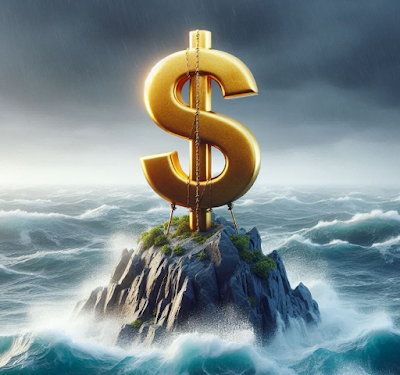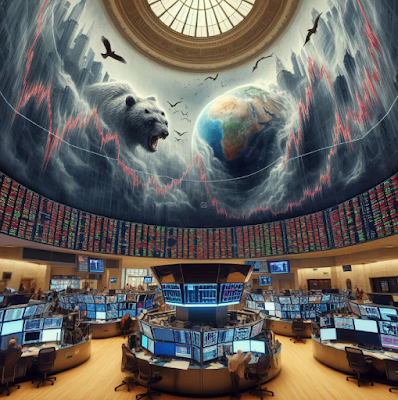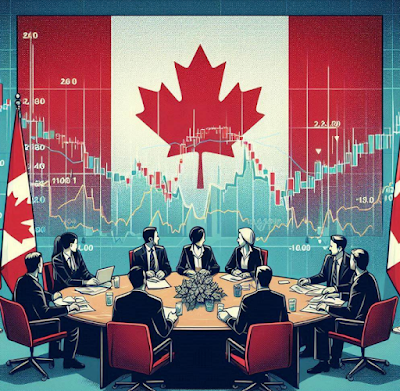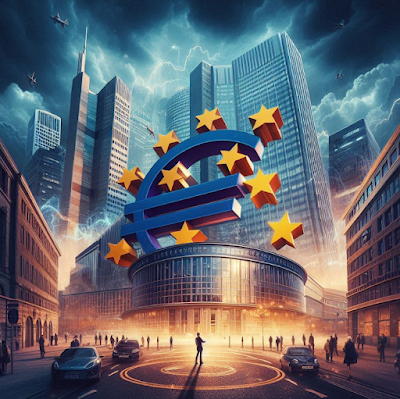Sometimes the news stream drives prices, and sometimes the price action drives the narratives. We argued that the sharp decline in equities at the start of the year was fanned the doom and gloom in the media and market commentary. Many had been taking about a new financial crisis and parallels were drawn between the price action now and the 2007-2008 period.
Perhaps it was the green shoot of spring flowers in the Northern Hemisphere. Perhaps it was the realization that the sell-off was exaggerated. Perhaps it was return of share buybacks following the earnings season. In any event, an important inflection point was reached February 10-12. Since then risk appetites have recovered.
As we argued, fears that the US was falling into a recession were greatly exaggerated. After slowing to a revised annualized pace of 1% in Q4 2015, the US economy is returning to trend growth. Incorporating the employment and trade figures released at the end of last week, the Atlanta Fed says the economy is tracking 2.1% growth in Q1.
Without relying on revolving credit to finance consumption, households are forced to rely more on current income. The continued improvement of the labor market is critical. The fall in average hourly earnings in February was disappointing, but we are persuaded that it reflects a quirk in when the survey is taken relative to when bimonthly paychecks are received. If this is correct, then consumption may hold up better than the earnings data may suggest. The quirk may be repeated this month, but come the spring, as the June FOMC meeting comes into view, the earnings data should snap back.
The increase in risk appetites has taken place alongside a reassessment of Fed policy. This is reflected in the 13 bp increase in the implied yield of the June Fed Funds futures contract over the past three weeks. At 45.5 bp, the June contract implies almost a 2/3 chance of a hike at the mid-year meeting. Offsetting perceived increase in the chance the Fed is not one and done that so many had thought is the increased confidence that China, the eurozone, and Japan will be providing additional support. China has cut required reserve ratios, which frees up the equivalent of over $100 bln.
The ECB meeting is the center of attention next week. A combination of renewed deflation (-0.2% year-over-year February CPI and 0.7% core rate), weakening economic data, and guidance by Draghi has fanned expectations that the ECB will extend its unorthodox policies. The market is cautious after being disappointed with a 10 bp rate cut and extending the asset purchase program by six months (~360 bln euros of purchases).
There are two main questions. What will the ECB do and what will be the economic and financial impact? The market seems to feel most confident that the deposit rate will be cut by at 10 bp, and a tiered system that will ease some of cost to banks, which for the most part is not being passed on to retail accounts. The derivatives markets indicate there are some expecting 15-20 bp cut.
However, if this is all the ECB does, investors will likely be disappointed. To get ahead of the curve of expectation, the ECB must do more. The purchase program can be extended for another six months. The end date is soft in any event, and the cost, of suspending it altogether, is that it denies a signaling channel. Increasing month purchases from 60 bln euros might have the biggest impact on market sentiment. This would raise new questions about the sustainability (e.g., are there sufficient German securities?).
The purchase program itself can be adjusted in various ways. A new asset class may be considered, such as private sector bonds. As the single supervisor over systemically important banks, the ECB is in a position to buy bank bonds, but this appears to be particularly controversial, and instead, some suggest the ECB could buy non-financial corporate bonds.
There has also been some talk of the possibility of a new long-term repo operation (LTRO). We do think this is very likely, but it illustrates the markets sense something has to be done. The current unorthodox mix includes a minus 30 bp deposit rate, purchases, have been extended six months longer than initially projected, and the 60 bln euros a month pace (program size ~14% of GDP) is still insufficient to boost inflation or stronger growth.
Growth has been stable near trend, but financial conditions tightened. Equity market sold off hard, and the Dow Jones Stoxx 600 is off 6.6% year-to-date, and that is after a three-week rally of nearly 15%. Surveys have deteriorated and don't forget, German, French and Italian industrial output fell in December, before the market turmoil.
The ECB introduced a rotating voting system last year. At the March 10 meeting, among a few central banks from small countries, of note, the Bundesbank's Weidmann will not vote. We do not think this changes the likely outcome. Weidmann is still about to present his arguments. We are under the impression that the voting is a formality and that, at least under Draghi's leadership, remains collegiate.
Since February 11 when the markets turned, the euro fell from $1.1375 to $1.0825, before in the second half of last week. The 5.5 cent slide brought the euro to the lower end of its previous range and the momentum stalled. Technically, there is scope for additional euro gains in the first part of next week.
However, the divergence of policy continues. The US two-year premium over Germany rose 20 basis points since February 11 and reached a new cyclical high near 143 bp last week. The 10-year premium rose has risen 25 bp from a five-month low to 168 bp, which is a couple of basis points off the year's high. Ultimately driven by the divergence of policy, which is far from peaking, the dollar's bull trend remains intact.
The markets will also be watching another meeting in Europe in the week ahead. It is the Emergency EU Summit on the refugee crisis. Several senior officials have warned that this issue, more than any other, poses existential risk to the European Union. They have cautioned that a solution needs to be found before the spring thaw which will likely see an increase in the number of refugees from levels that are already well above what was seen a year ago. It is a complicated issue that involves elements, like the cease-fire in Syria, that are beyond the control of the summit. Any significant disappointment would likely be euro negative.
Some suggest a UK decision to leave the EU also poses a significant risk to the EU. It was only in the UK's interest to have the G20 recognize the global risks of Brexit, so there can be little doubt that its appearance in the G20 statement was at the British government's insistence. Some media reports claim that sterling's slide is a function of investors "betting" that the UK votes to leave the EU.
We see it somewhat differently. Most polls continue to show the at those that want to stay in the EU are ahead of those that want to leave. Investors are not betting against the polls, but recognize the risk of a significant downside risk for sterling and the price of sterling assets.
It appears that what may be the first phase of risk adjustment is complete. Sterling traded higher every day last week after reaching a multiyear low near $1.3835 on February 29. The implied four-month volatility (covering the referendum) and the (25 delta) four-month risk reversals bottomed a few days earlier. There is risk that BOE Governor Carney's testimony in parliament (March 8) about the economic and financial impact of Brexit may stir up anxiety. If risk is a function of probability and impact, if the former stays the same but perceptions of the latter increase, another wave of reducing sterling exposure cannot be ruled out.
The Bank of Canada and the Reserve Bank of New Zealand meet in the week ahead. The Bank of Canada is on hold. It cannot be happy about the 9.4% appreciation of the Canadian dollar since January 20. On the other hand, oil prices have stopped falling, the economy did better than investors expected in December, growing 0.2%, and the stock market (an element of financial condition measures) is the only one in the G7 that is up on the year (~1.5%).
The same day the US dollar peaked against the Canadian dollar (~CAD1.47), the June 2016 Canadian BA futures (three-month deposit future contract) recorded its low implied yield of 50 bp. It has since risen to 85 bp, where in recent sessions it has been basing. Barring an expectation of a hike, or some sort of new risk, it is difficult to see the value in higher implied yields. The market appears vulnerable to a dovish cast to Poloz's neutrality.
The consensus is for the Reserve Bank of New Zealand to remain on hold. There does not seem to be a sense of urgency. The lowflation gives the central bank scope to cut the 2.5% cash rate. The trade-weighted index is still down on the year, so there is no pressing need to offset currency strength. House prices are rising quickly (11.6% year-over-year in February) and inject a note of caution.
Although investor sentiment seems somewhat less tied to the Chinese developments compared with at the start of the year, developments there are still important. The PBOC 50 bp cut of required reserve ratios was part of the overall extension of the risk-on move last week. The legislative session (National People's Congress) continues.
There do not appear to have been major surprises over the weekend. Growth for this year was pegged at 6.5%-7.0%. A year ago it was said to be "about 7%). More structural reforms, including opening new sectors to competition, and shuttering some excess capacity in several sectors, were announced. All this was of course in line with the new five-year plan.
In the week ahead China reports reserves, trade, inflation and lending. The February figures will be distorted by the Lunar New Year holiday. The drawn down in reserves is expected to have slowed considerably. The consensus is for about a $40 bln decline. Exports and imports look to have continued their year-over-year decline, but this time, the result will likely be a small trade surplus. The distortions, however, will makes it difficult to extrapolate. CPI is expected to be steady at 1.8%.
There is much concern in the media and among some investors and speculators about Chinese debt. The February lending figures are likely to suggest that leveraging continues. The extension of yuan loans and aggregate financing are expect to have increased in February, albeit at half of January's pace. Recall aggregate financing reached a record of CNY3.42 trillion in January. To put this in context, consider that the 12, 24 and 36-month averages are flat in the CNY1.35-CNY1.39 trillion area. The consensus calls for nearly CNY1.8 trillion of new financing to have been extended in February.
The markets may have gotten ahead of themselves at the end of last week on the prospects that the political crisis in Brazil was going to have quick closure. The detention of former President Lula and speculation of President Dilma would step down saw a strong rally in Brazil's currency, stock market and bond market. While this represents an important escalation of the political crisis, it does not seem to mark the end or even the beginning of the end. There is risk that the pre-weekend euphoria fades in the cold reality of the new week with so resolution at hand.
Lastly, we recognize increased interest in the US presidential race. On the Democrat side, while Sanders continues to put on a strong showing, it does not appear sufficient to stop Clinton from securing the delegates needed for nomination. There is still talk in some quarters of a potential indictment for Clinton over the emails, which could derail her bid. As belatedly as it may be for many critics, the "stop Trump" efforts are being to coalesce and are expected to gear up to prevent a Trump victory in both Ohio and Florida on March 15. These two contests are thought to be an important firewall.
If Kasich can carry his state of Ohio, and Rubio can take his state of Florida or prevent Trump from winning it, it would bolster the chances what is called a brokered convention. The idea here is that to secure the nomination, a candidate has to get a majority of the delegates. Trump is not achieving this threshold. He has a plurality but not a majority. A brokered convention refers to the negotiations between the candidates to encourage their delegates to vote for someone other than themselves in exchange for policies and/or appointments.
Tags: Bank of Canada,U.S. Average Earnings

































